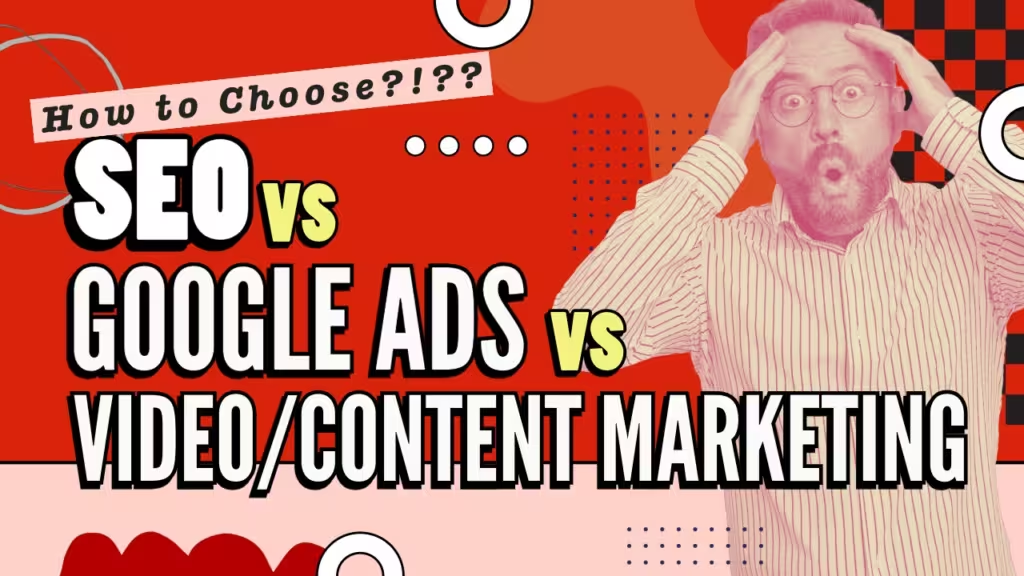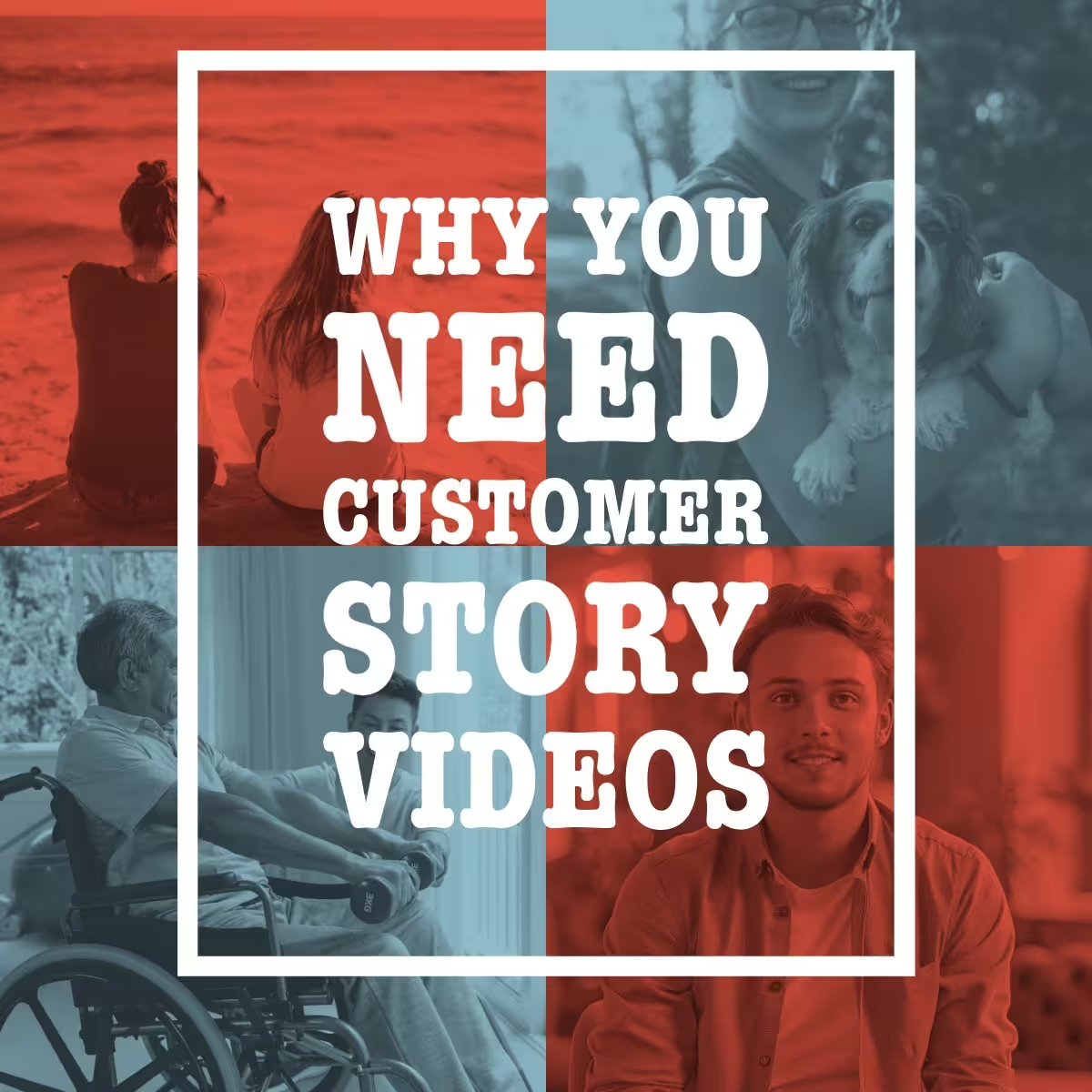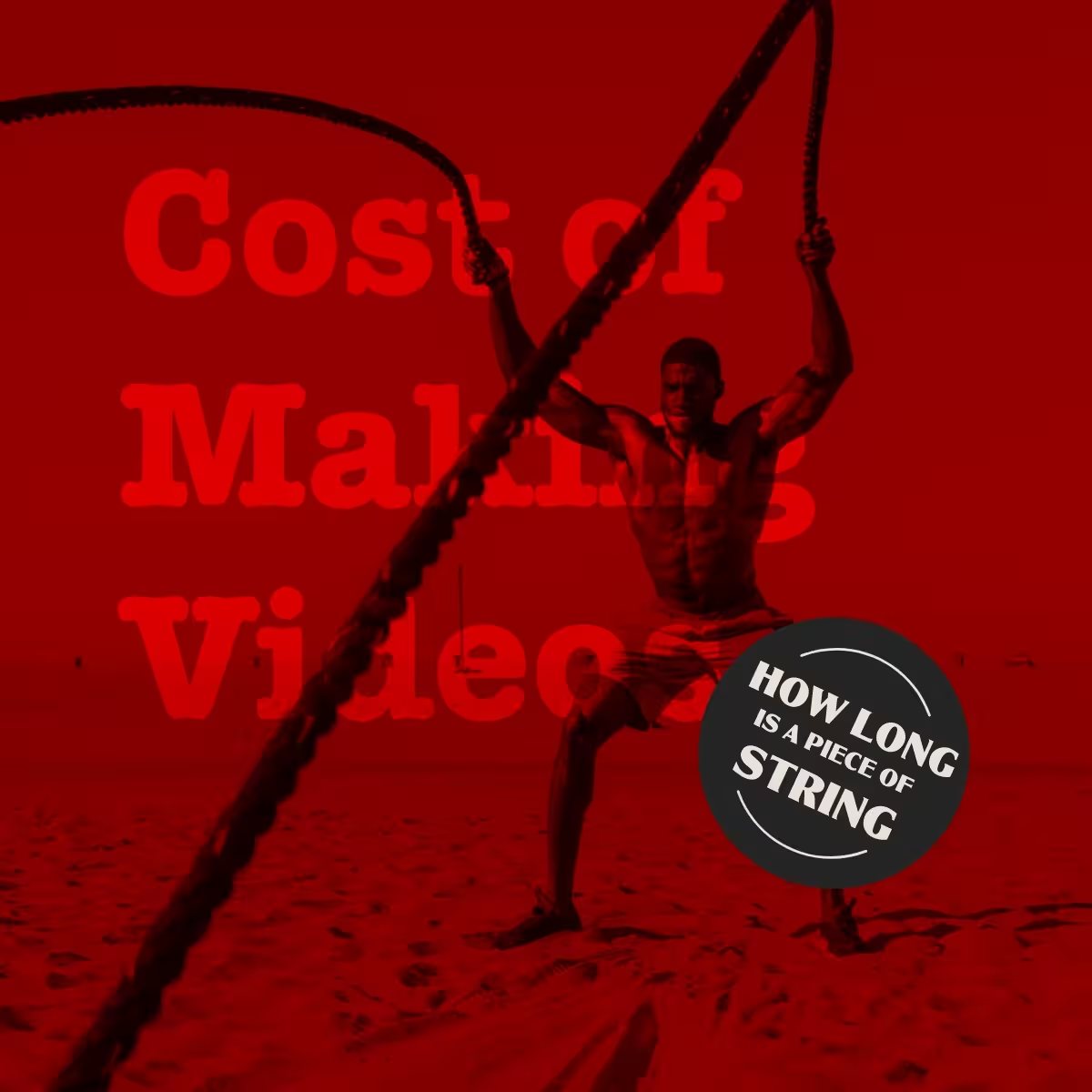When it comes to digital marketing, the choices can feel overwhelming. You’ve got SEO, Google Ads, and Inbound Video Marketing (or Content Marketing) all vying for your attention. But how do you know which one is the best fit for your business?
This is a question that many businesses and marketing departments struggle with… With only a limited budget, which one will provide the most bang-for-buck?
Spoiler alert: the answer might not be as straightforward as you think.
SEO: The Long Game
Search Engine Optimization (SEO) is all about playing the long game. If you’re looking to build a strong, sustainable online presence, SEO is your go-to. It’s like planting a tree—takes time to grow, but once it does, the shade is there for years.
Key Uses:
- Building long-term organic traffic
- Establishing authority and credibility
- Targeting informational queries
- Improving overall website user experience
Advantages:
- Sustainable long-term results
- Higher click-through rates for organic listings
- Cost-effective in the long run
- Builds trust and credibility
Disadvantages:
- Takes time to see results (often 6-12 months)
- Requires ongoing effort and content creation
- Results can be affected by algorithm changes
SEO is a powerhouse when it comes to building trust and authority. But the reality is, it’s a slow burn.
It is particularly scary for new businesses, when you are wondering why your web traffic can be counted with 2 hands for over 6 months.
You’re not going to see overnight success, but when those results do come, they stick around.
For those looking for a quick win, there’s…
Google Ads: The Quick Win
Google Ads is the sprinter. This pay-per-click (PPC) platform gets your business in front of potential customers fast—like, really fast. The trade-off? You’ll need to keep feeding the machine (Google Adwords) to maintain visibility.
Key Uses:
- Generating immediate traffic and leads (assuming that you have done it right)
- Targeting specific keywords and audiences
- Promoting time-sensitive offers or events
- Testing new markets or products quickly
Advantages:
- Immediate visibility and results (Be wary that this could be positive or negative results)
- Precise targeting options
- Measurable ROI and performance data
- Flexibility to adjust campaigns quickly
Disadvantages:
- Can be expensive, especially in competitive industries and keywords
- Requires ongoing investment to maintain visibility (anything from $1000 – $10000/mth)
- Less trust from some users who prefer organic results
Google Ads is perfect for businesses that need results yesterday. Whether you’re launching a new product or running a limited-time offer, this tool can drive traffic and conversions in the blink of an eye.
The caveat to this is that you need also need to do it correctly. It is best to get a Google Ads expert to help you if you really want to achieve results.
But remember, those clicks come at a price—both in terms of budget and trust. Some users are inherently wary of ads, preferring organic results that don’t feel like they’re being sold to.
Inbound Video Marketing: The Relationship Builder
Inbound Video Marketing, and Content Marketing in general, is the art of drawing customers in with valuable, engaging content. Think of it as the ultimate relationship builder, nurturing your audience through every stage of the buyer’s journey.
Key Uses:
- Building brand awareness and thought leadership
- Educating and nurturing prospects
- Addressing customer pain points and questions
- Creating a loyal audience and community
Advantages:
- Builds lasting relationships with customers
- Versatile content can be repurposed across channels
- Supports both SEO and paid advertising efforts
- Positions brand as an industry authority
Disadvantages:
- Requires consistent content creation
- Can take time to build an audience
- Needs a clear strategy and buyer persona understanding
- Results can be harder to measure directly
Inbound Video Marketing is where your brand’s personality can truly shine. It’s not just about selling; it’s about telling a story, solving problems, and becoming a trusted resource for your audience.
The challenge? It takes time and effort to create the kind of content that resonates deeply with your audience. But when done right, the payoff is a loyal customer base that sees your brand as more than just a product or service.
Which one to Use? The Ultimate Strategy
Here’s the kicker: you shouldn’t just pick one. In fact, the best digital marketing strategies often involve a combination of SEO, Google Ads, and Inbound Video Marketing.
- SEO lays the foundation by building long-term organic traffic and credibility.
- Google Ads provides immediate visibility, helping you reach potential customers quickly while you wait for your SEO efforts to bear fruit. (It also helps by driving more people to your website, increasing the chance that your potential customers will see you)
- Inbound Video Marketing ties everything together by nurturing leads and building relationships, ultimately driving conversions and brand loyalty.
Creating Inbound Video Marketing content, you are helping to build up your website’s SEO for keywords you want. Google Ads can help you further direct your customers to you for these keywords.
One good, but expensive use of Google Ads to test keywords and content ideas. Google Ads target your potential audience with the keywords and copy that you hope resonates with your customers. Tracking which content, copy and keywords gets the most Click Throughs, you can determine what would most likely work for other content.
Then integrate the successful elements into your SEO and Inbound Video Marketing strategies. By combining these approaches, you’re not just covering all your bases—you’re creating a comprehensive digital marketing strategy that drives both short-term wins and long-term growth.
Final Thoughts: What’s Your Play?
In the end, the right strategy depends on your specific goals, resources, and timeline. If you’re in it for the long haul, invest in SEO and Inbound Video Marketing. If you need quick results, Google Ads can give you that instant boost. But for the best results, consider integrating all three. After all, why settle for one strategy when you can leverage the strengths of all three to maximize your success?




